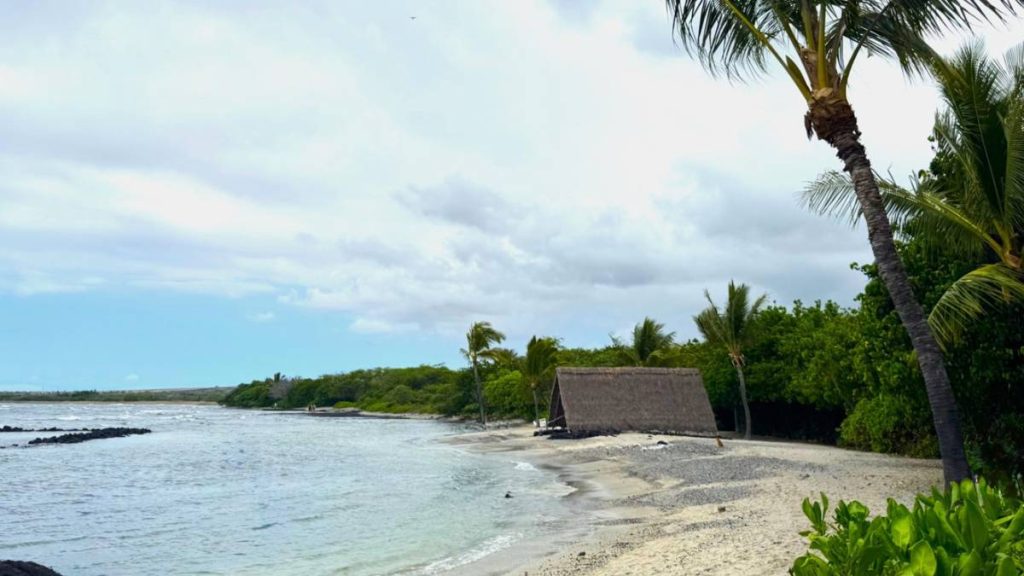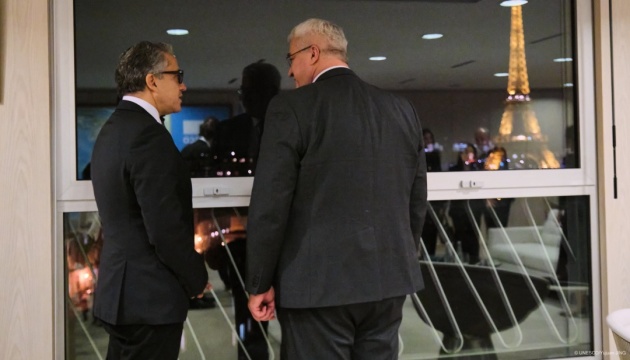Learn more about final plan for connecting green spaces in Kona – Big Island Now

Report on the Kona Open Space Network Conceptual Plan and its Contribution to Sustainable Development Goals
Introduction: Advancing Sustainable Community Development in Kona
The final Kona Open Space Network (KOSN) Conceptual Plan is scheduled for public presentation in December. This community-driven initiative, originating from the Kona Community Development Plan, represents a significant step towards achieving multiple United Nations Sustainable Development Goals (SDGs) by creating an interconnected network of public open spaces to enhance community resilience and well-being.
Core Objectives and Alignment with Global Sustainability Targets
The KOSN plan is designed to achieve several key objectives that directly support the 2030 Agenda for Sustainable Development:
- SDG 11 (Sustainable Cities and Communities): The primary goal is to connect and preserve public open spaces by linking corridors such as trails, bike paths, shorelines, and roadways. This enhances multimodal access and creates inclusive, safe, and resilient public green spaces for the community.
- SDG 3 (Good Health and Well-being): By establishing a system of on- and off-road pedestrian and bicycle trails, the plan actively encourages healthy, active lifestyles, contributing directly to the physical and mental well-being of residents.
- SDG 13 (Climate Action): The plan incorporates critical climate adaptation and mitigation strategies. It emphasizes retaining green areas for improved drainage and flood control, and planting trees for shade and carbon absorption.
- SDG 15 (Life on Land): The preservation of green spaces and promotion of native flora, as demonstrated by a planned plant adoption event, supports the protection of local terrestrial ecosystems and biodiversity.
Implementation Strategy and Partnerships for the Goals (SDG 17)
The final plan outlines a comprehensive approach to implementation, underscoring the importance of collaboration as championed by SDG 17. Key strategic components include:
- Development of strategic partnerships with community organizations and stakeholders.
- Establishment of effective management strategies for the open space network.
- Identification of diverse funding opportunities to ensure long-term project sustainability.
As stated by Hawaiʻi County Mayor Kimo Alameda, the plan “reflects our shared commitment to preserving and connecting public spaces,” highlighting the collaborative spirit essential for achieving the SDGs.
Public Engagement and Community Empowerment
A public meeting will be held to present the final plan and engage the community in its future, fostering inclusive decision-making central to the SDG framework.
- Date: December 4
- Time: 4-6 p.m.
- Location: Makaeo County Pavilion at Old Kona Airport Park, 75-5500 Kuakini Highway in Kailua-Kona.
The event will feature a presentation on the final conceptual plan and identified projects. It will also showcase the project’s collaborative nature, with participation from key community partners who contribute to local sustainability efforts:
- The Pālamanui Dry Forest team
- The County’s Office of Sustainability, Climate, Equity, and Resilience
- The Kona Outdoor Circle
Furthering its commitment to SDG 15 (Life on Land), the county will host a pop-up plant adoption, providing free native and canoe plants to residents on a first-come, first-served basis to encourage local ecosystem restoration.
Analysis of Sustainable Development Goals in the Article
1. Which SDGs are addressed or connected to the issues highlighted in the article?
The article on the Kona Open Space Network Conceptual Plan addresses several Sustainable Development Goals (SDGs) through its focus on community development, environmental preservation, and public well-being. The following SDGs are relevant:
- SDG 3: Good Health and Well-being: The plan’s objective to create trails and bike paths to “encourage healthy active lifestyles” directly contributes to promoting physical and mental well-being.
- SDG 11: Sustainable Cities and Communities: The core mission of the plan is to “connect and preserve public open spaces,” create “trails, bike paths, shorelines and roadways that support multimodal access,” and retain green areas, which aligns with making communities more inclusive, safe, resilient, and sustainable.
- SDG 13: Climate Action: The article highlights the plan’s role in climate mitigation and adaptation by retaining “green areas for drainage/flood control” and planting “trees for shade and carbon absorption.” The involvement of the County’s Office of Sustainability, Climate, Equity, and Resilience further strengthens this connection.
- SDG 15: Life on Land: By aiming to preserve open spaces, shorelines, and promoting the use of native plants through a “pop-up plant adoption,” the plan supports the protection and restoration of terrestrial ecosystems and biodiversity.
- SDG 17: Partnerships for the Goals: The article emphasizes the collaborative nature of the project, describing it as a “community-initiated goal” that involves “partnership development” and participation from various “community partners,” the public, and government bodies.
2. What specific targets under those SDGs can be identified based on the article’s content?
Based on the initiatives described in the article, the following specific SDG targets can be identified:
- Target 3.4: Reduce by one-third premature mortality from non-communicable diseases through prevention and treatment and promote mental health and well-being. The plan’s goal to create a “system of on and off-road pedestrian and bicycle trails that encourage healthy active lifestyles” is a preventative health measure aimed at reducing diseases associated with inactivity.
- Target 11.2: Provide access to safe, affordable, accessible and sustainable transport systems for all. The plan’s focus on creating “trails, bike paths…and roadways that support multimodal access” directly addresses the need for sustainable transport options for pedestrians and cyclists.
- Target 11.7: Provide universal access to safe, inclusive and accessible, green and public spaces. The fundamental goal of the Kona Open Space Network is to “connect and preserve public open spaces” and “retain green areas,” making them accessible to the community.
- Target 13.1: Strengthen resilience and adaptive capacity to climate-related hazards and natural disasters. The plan’s intention to maintain “green areas for drainage/flood control” is a direct strategy to build resilience against climate-related hazards like extreme rainfall and flooding.
- Target 15.5: Take urgent and significant action to reduce the degradation of natural habitats and halt the loss of biodiversity. The preservation of open spaces and shorelines, coupled with the initiative to provide “free native and canoe plants,” contributes to protecting local habitats and biodiversity.
- Target 17.17: Encourage and promote effective public, public-private and civil society partnerships. The article highlights that the plan was “shaped by the community” and involves collaboration between the County Planning Department, consultants, a subcommittee, and “community partners” like the Pālamanui Dry Forest team and the Kona Outdoor Circle.
3. Are there any indicators mentioned or implied in the article that can be used to measure progress towards the identified targets?
The article implies several indicators that could be used to measure progress towards the identified targets, although it does not state them in formal SDG indicator language:
- For Target 3.4: An implied indicator is the utilization rate of the new pedestrian and bicycle trails. Success is measured by the extent to which the network can “encourage healthy active lifestyles.”
- For Target 11.2: An implied indicator is the total length (in miles or kilometers) of new pedestrian and bicycle trails and dedicated multimodal corridors created as part of the network.
- For Target 11.7: A key implied indicator is the total area of public open and green space preserved and connected by the network.
- For Target 13.1 & 13.2: Implied indicators include the area of green space designated for drainage/flood control and the number of trees planted for carbon absorption.
- For Target 15.5: A specific indicator mentioned in the article is the number of native and canoe plants distributed to the community through the “pop-up plant adoption” event.
- For Target 17.17: A direct indicator is the number of community partners actively engaged in the plan’s implementation. The article names several, including the Pālamanui Dry Forest team, the Office of Sustainability, and the Kona Outdoor Circle.
4. Table of SDGs, Targets, and Indicators
| SDGs | Targets | Indicators (Identified or Implied in the Article) |
|---|---|---|
| SDG 3: Good Health and Well-being | 3.4: Promote mental health and well-being and reduce mortality from non-communicable diseases. | Utilization rate of pedestrian and bicycle trails created to “encourage healthy active lifestyles.” |
| SDG 11: Sustainable Cities and Communities | 11.2: Provide access to safe, affordable, accessible and sustainable transport systems for all.
11.7: Provide universal access to safe, inclusive and accessible, green and public spaces. |
Total length of new trails, bike paths, and corridors supporting “multimodal access.”
Total area of “public open spaces” and “green areas” preserved and connected by the network. |
| SDG 13: Climate Action | 13.1: Strengthen resilience and adaptive capacity to climate-related hazards and natural disasters. | Area of green space retained for “drainage/flood control.”
Number of “trees for shade and carbon absorption” planted. |
| SDG 15: Life on Land | 15.5: Take urgent action to reduce the degradation of natural habitats and halt biodiversity loss. | Number of “free native and canoe plants” distributed through the pop-up adoption event. |
| SDG 17: Partnerships for the Goals | 17.17: Encourage and promote effective public, public-private and civil society partnerships. | Number of “community partners” (e.g., Pālamanui Dry Forest team, Kona Outdoor Circle) involved in the project. |
Source: bigislandnow.com
What is Your Reaction?
 Like
0
Like
0
 Dislike
0
Dislike
0
 Love
0
Love
0
 Funny
0
Funny
0
 Angry
0
Angry
0
 Sad
0
Sad
0
 Wow
0
Wow
0




















































.jpg.webp?itok=0ZsAnae9#)


























